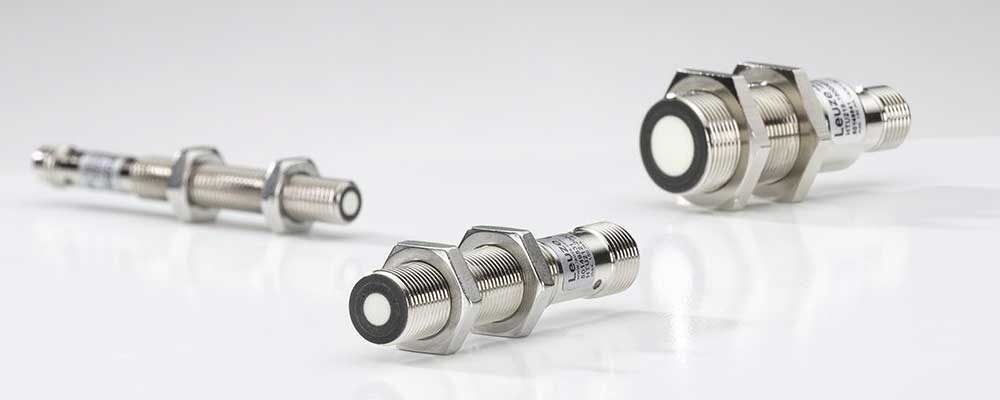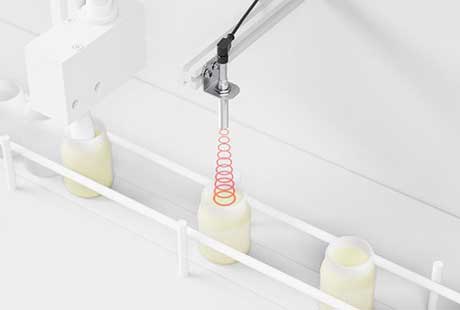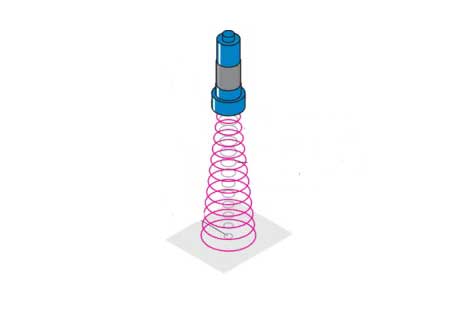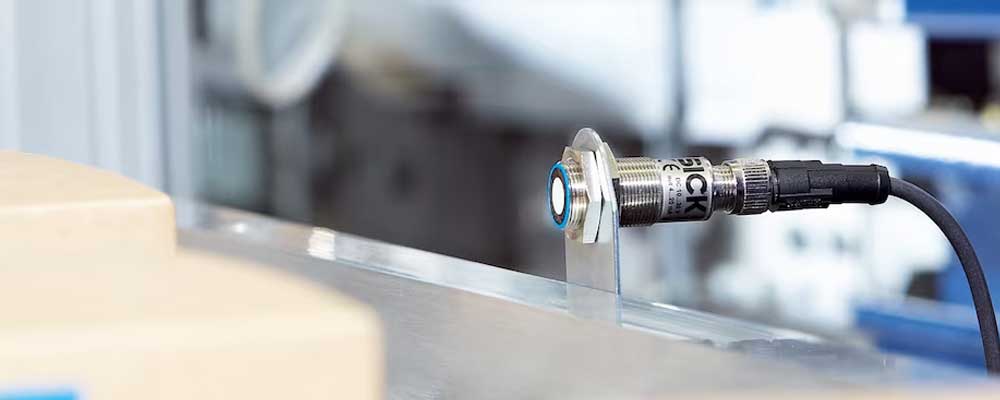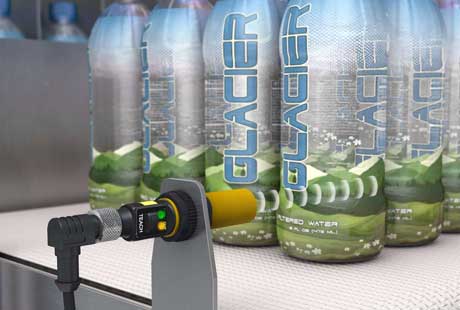What is an Ultrasonic Sensor and How Does It Work?
Are you curious about how ultrasonic sensors function?
In this blog, we’re set to explain these devices. Starting with the basics of Ultrasonic sensors, we’ll explore what ultrasonic sensors are and how they operate. You’ll get insights into their key components, understand their range and frequency, and see how they fit into various industrial applications.
But there’s more.
We’ll also discuss their pros and cons and take a sneak peek at the future trends in ultrasonic sensor technology. By the end of this read, you’ll not only grasp the essentials of ultrasonic sensors but also appreciate their significant role in industrial engineering.
Table of Contents:
- Introduction
- What is an Ultrasonic Sensor?
- How do Ultrasonic Sensors Work?
- Components and Design of Ultrasonic Sensors
- Range and Frequency of Ultrasonic Sensors
- Applications of Ultrasonic Sensors in Industry
- Advantages and Limitations of Ultrasonic Sensors
- Innovations and Future Trends in Ultrasonic Sensor Technology
- Practical Considerations for Using Ultrasonic Sensors
- Conclusion
What is an Ultrasonic Sensor?
An ultrasonic sensor is a device that uses sound waves to detect objects and measure distances.
This might sound complex, but the principle of ultrasonic sensor operation is quite straightforward.
Let’s break it down.
Imagine you’re in a room and you shout towards a wall. You’ll hear an echo as your voice bounces back. An ultrasonic sensor works on a similar principle. It emits sound waves at a frequency too high for the human ear to hear – hence the term ‘ultrasonic’. These waves travel through the air, hit an object, and then bounce back to the sensor. By measuring the time it takes for the echo to return, the sensor can calculate the distance to the object.
The beauty of this technology lies in its simplicity and efficiency. Ultrasonic sensors don’t require physical contact with the object they’re measuring, making them ideal for applications where contact is impractical or impossible. This non-intrusive nature is a significant advantage in industrial settings.
So, when we talk about the ultrasonic sensor principle, we’re referring to the use of sound waves to detect objects and measure distances. It’s a concept that’s both simple and ingenious, providing a reliable way to gather important data in various industrial applications.
How do Ultrasonic Sensors Work?
When we look at an ultrasonic sensor, what are we actually seeing?
Let’s break down its key components and design to get a clearer picture. Understanding these elements is crucial, especially in industrial engineering, where precision and functionality are paramount.
An ultrasonic sensor typically consists of two main components: a transmitter and a receiver. The transmitter emits ultrasonic sound waves, which are sound waves at a frequency higher than what the human ear can detect. These waves travel through the air and, upon encountering an object, they bounce back as an echo, which is then captured by the receiver.
Now, here’s where the magic happens. The time taken for the sound waves to travel to the object and back is measured. This is known as the ‘time of flight’. Since the speed of sound is a known constant (under specific conditions), calculating the distance between the sensor and the object becomes a straightforward task.
By using the formula:
Distance = (Speed of Sound x Time of Flight) / 2
the sensor can accurately determine how far away the object is.
This method of how ultrasonic sensors work is not just about distance measurement. It can also be used to detect the presence or absence of an object, or even its position. This versatility makes ultrasonic sensors invaluable in various industrial applications, from robotics to process control.
The working principle of the ultrasonic sensor is all about emitting sound waves, timing their echo, and using this information to measure distance or detect objects. It’s a clear example of how a simple concept, when executed with precision, can yield incredibly useful results.
Components and Design of Ultrasonic Sensors
When we look at an ultrasonic sensor, what are we actually seeing?
Let’s break down its key components and design to get a clearer picture. Understanding these elements is crucial, especially in industrial engineering, where precision and functionality are paramount.
At the heart of an ultrasonic sensor are two critical components: the ultrasonic transmitter and the receiver. The transmitter is like the voice of the sensor. It sends out ultrasonic sound waves – those are sound waves that are higher in frequency than what our ears can pick up. Then there’s the receiver, which you can think of as the sensor’s ear. It listens for any echoes of these ultrasonic waves bouncing back after hitting an object.
Now, if you were to look at an ultrasonic sensor diagram, you’d notice that these components are typically housed in a compact and sturdy design. This design is not just about packing everything neatly; it’s engineered to protect the components from environmental factors like dust or moisture, which are common in industrial settings. The design also ensures that the sound waves are emitted and received efficiently, without any interference.
Besides the transmitter and receiver, there are other elements within the sensor, like the circuitry that processes the signals and calculates the distance based on the time it takes for the echoes to return. This circuitry is the brain of the sensor, translating acoustic data into meaningful measurements.
The components and design of ultrasonic sensors are all about efficient and accurate transmission and reception of sound waves. The compact and robust design of these sensors makes them suitable for a wide range of industrial applications, where they provide reliable data crucial for various processes.
Range and Frequency of Ultrasonic Sensors
In the world of ultrasonic sensors, two critical factors greatly influence their performance: the range and the frequency range.
As industrial engineers, understanding these aspects is key to selecting the right sensor for your application
Let’s start with the ultrasonic sensor range. This refers to the maximum and minimum distances within which the sensor can accurately detect objects. Think of it as the sensor’s field of vision – too close or too far, and the object won’t be in clear sight. The range varies between different models and is influenced by the sensor’s design and the environment in which it’s used. For instance, in a factory setting with lots of ambient noise, the effective range might be different compared to a controlled laboratory environment.
Now, onto the frequency range of ultrasonic sensors. Frequency here refers to how fast the sound waves vibrate when they are emitted. The frequency range of an ultrasonic sensor is crucial because it determines several aspects of the sensor’s performance. Higher frequencies, for example, offer better resolution and can detect smaller objects. However, they also have shorter ranges and are more susceptible to interference from environmental factors like air turbulence or humidity. Lower frequencies, on the other hand, can travel longer distances and are less affected by such factors, but they might not be as precise in detecting small objects.
The ultrasonic sensor range and ultrasonic sensor frequency range are vital considerations in sensor performance. They determine how far and how well the sensor can detect objects, which is crucial in industrial applications where precision and reliability are non-negotiable. Understanding
Applications of Ultrasonic Sensors in Industry
Ultrasonic sensors are not just fascinating in how they work; their real value shines through in their diverse applications across various industries.
Let’s explore how these sensors are employed in different sectors, highlighting their versatility and importance.
One of the primary ultrasonic sensors used in industry is distance measurement. This is crucial in settings like manufacturing plants where precise positioning of machinery and components is necessary. For example, in the automotive industry, ultrasonic sensors help ensure robotic arms place parts accurately, maintaining high standards of assembly.
Another significant application of ultrasonic sensors is in the field of material handling. In warehouses and logistics centers, these sensors play a vital role in inventory management. They help in determining the level of materials in bins or containers, ensuring efficient stock management and preventing overflows or shortages.
In the world of process control, the application of ultrasonic sensors is equally vital. They are used for monitoring and controlling fluid levels in tanks, such as in the chemical or food and beverage industries. Their ability to measure without contact is particularly useful in dealing with hazardous or sanitary-sensitive materials.
For those interested in exploring state-of-the-art ultrasonic sensors, Leuze Ultrasonic Sensors offer advanced solutions tailored for these industrial applications. Their range of sensors is designed to meet the diverse needs of modern industry, combining precision, reliability, and innovation.
The applications of ultrasonic sensors in the industry are vast and varied. From precision in manufacturing to safety in automated environments, these sensors provide solutions that enhance efficiency, safety, and productivity across numerous sectors. Their ability to accurately sense and measure, even in challenging conditions, makes them indispensable tools in the industrial world.
Advantages and Limitations of Ultrasonic Sensors
Ultrasonic sensors come with a set of advantages that make them highly sought after in various industrial applications. However, like any technology, they also have their limitations. Understanding both sides of the coin is crucial for industrial engineers to make informed decisions.
Starting with the advantages of ultrasonic sensors, one of their most significant benefits is their ability to measure distance without contact. This non-intrusive nature means they can be used with sensitive or hazardous materials without risk. They’re also versatile in detecting a wide range of materials, regardless of color, transparency, or surface texture, which is not always the case with other types of sensors.
Another key advantage is their accuracy and reliability. Ultrasonic sensors can provide precise measurements, which is essential in industries where even a small error can have significant consequences. Additionally, they are generally robust and can operate effectively in a variety of environmental conditions, including those with dust, smoke, or high humidity.
However, there are limitations of ultrasonic sensors to consider. One of the main drawbacks is their susceptibility to temperature variations and air turbulence, which can affect the accuracy of their measurements. They also have a limited range, beyond which their effectiveness diminishes. This means they might not be suitable for applications requiring long-distance measurements.
Moreover, ultrasonic sensors can sometimes struggle with detecting very small or thin objects, as well as objects with an uneven surface, which can scatter the sound waves. And, in environments with high levels of ambient noise, their performance can be impacted.
While ultrasonic sensors offer numerous advantages like non-contact measurement, versatility, and accuracy, they also have limitations related to environmental factors and object characteristics. Understanding these aspects helps industrial engineers to choose the right sensor for their specific needs, ensuring optimal performance in their applications.
Innovations and Future Trends in Ultrasonic Sensor Technology
The landscape of ultrasonic sensor technology is continually evolving, with innovations that promise to expand their capabilities and applications even further. As industrial engineers, it’s exciting to look ahead and consider what the future of ultrasonic sensors might hold.
One of the most notable areas of advancement is in the integration of ultrasonic sensors with artificial intelligence and machine learning. This combination is set to revolutionize how sensors process and interpret data, leading to smarter and more autonomous systems. For instance, in robotics, the use of ultrasonic sensors is becoming increasingly sophisticated. The integration of these sensors in robotic systems allows for more precise navigation and object detection, enhancing the efficiency and safety of automated processes.
Another significant trend is the miniaturization of ultrasonic sensors. As sensors become smaller, they can be integrated into more compact and intricate systems, opening up new possibilities in various fields, including medical technology and consumer electronics. This miniaturization also means that sensors can be placed in previously inaccessible locations, providing data that was once challenging to obtain.
Furthermore, there’s a growing focus on improving the range and accuracy of ultrasonic sensors. Advances in materials and design are leading to sensors that can operate over greater distances and with higher precision. This is particularly important in industrial applications where the accuracy of measurements can significantly impact the quality and efficiency of processes.
Looking to the future, we can expect to see ultrasonic sensors becoming even more integrated into the fabric of industrial operations. Their ability to provide reliable, non-contact measurements makes them invaluable in an increasingly automated world. With ongoing research and development, the potential applications of these sensors are bound to expand, making them an even more integral part of modern industrial engineering.
The future of ultrasonic sensors is bright, with innovations in AI integration, miniaturization, and enhanced performance. These advancements are set to open up new frontiers in how we use and benefit from ultrasonic sensor technology in various industries.
Practical Considerations for Using Ultrasonic Sensors
In the industrial world, knowing how to work with ultrasonic sensors effectively is as important as understanding their theory.
Here are some practical tips on selecting, installing, and maintaining these sensors to ensure optimal performance in your projects.
Selecting the Right Sensor:
Consider the Application: The first step is to clearly define what you need the sensor for. Is it for distance measurement, object detection, or level monitoring? Different applications might require different sensor specifications.
Evaluate the Environment: Ultrasonic sensors can be affected by environmental factors like temperature, humidity, and air turbulence. Choose a sensor that suits the conditions it will operate in.
Check the Specifications: Pay attention to the range, frequency, and the size of the sensor. Ensure that these specifications align with your application requirements.
Installation Tips:
Positioning: The placement of the sensor is crucial. It should have a clear path to the target without obstructions. Avoid installing it near surfaces that might cause unwanted reflections.
Alignment: Proper alignment is key. The sensor should be oriented directly towards the target for accurate measurements.
Wiring and Connections: Ensure all electrical connections are secure and follow the manufacturer’s guidelines. Incorrect wiring can lead to malfunction or inaccurate readings.
Maintenance and Troubleshooting:
Regular Cleaning: Keep the sensor’s surface clean. Dust, dirt, or moisture on the sensor can affect its performance.
Routine Checks: Regularly test the sensor to ensure it’s functioning correctly. Look out for changes in performance, which could indicate issues.
Troubleshooting: If a sensor is not working as expected, check for common issues like misalignment, blockages, or electrical interference. Consult the manufacturer’s documentation for specific troubleshooting guidance.
While ultrasonic sensors are robust and reliable, their effectiveness greatly depends on correct selection, installation, and maintenance. By paying attention to these practical aspects, you can ensure that your ultrasonic sensors operate efficiently and continue to be a valuable asset in your industrial applications.
Conclusion
Reflecting on our journey, we’ve traversed the fascinating landscape of ultrasonic sensors. From a simple introduction to their complex workings, we’ve covered substantial ground. You’ve learned about the components that make these sensors tick, and how their range and frequency define their capabilities. We’ve seen their versatility in action across different industrial sectors. Balancing their strengths and weaknesses has given us a well-rounded view of their functionality.
And looking ahead, we’ve touched upon the exciting developments shaping their future. This exploration was more than just an information session; it was about sparking your interest and deepening your understanding of a key player in the field of industrial engineering.

